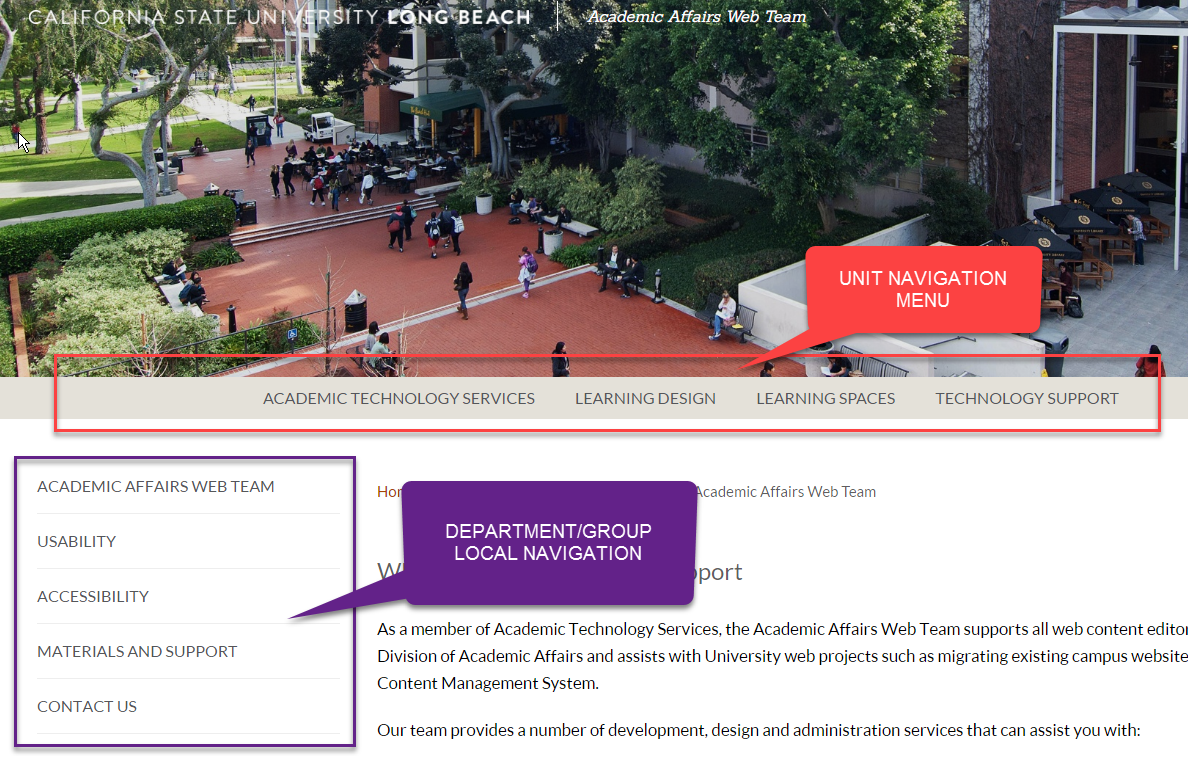Editing Menus
Editing group menus is restricted to your group's web lead. Please consult with them if content changes are necessary for your group's website.
To edit a menu, first log in to the CSULB Drupal CMS and access your unit or department.
- On the homepage, select 'Group' and then select 'Menus' form your group's content list.
Image
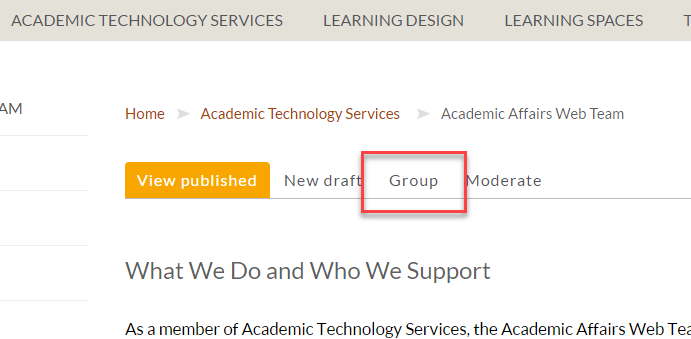
- You’ll see available group menus. Selecting any of the options to the right of the menu (‘list links’, ‘edit menu’, ‘add link’) will take you to the editing interface.
Image
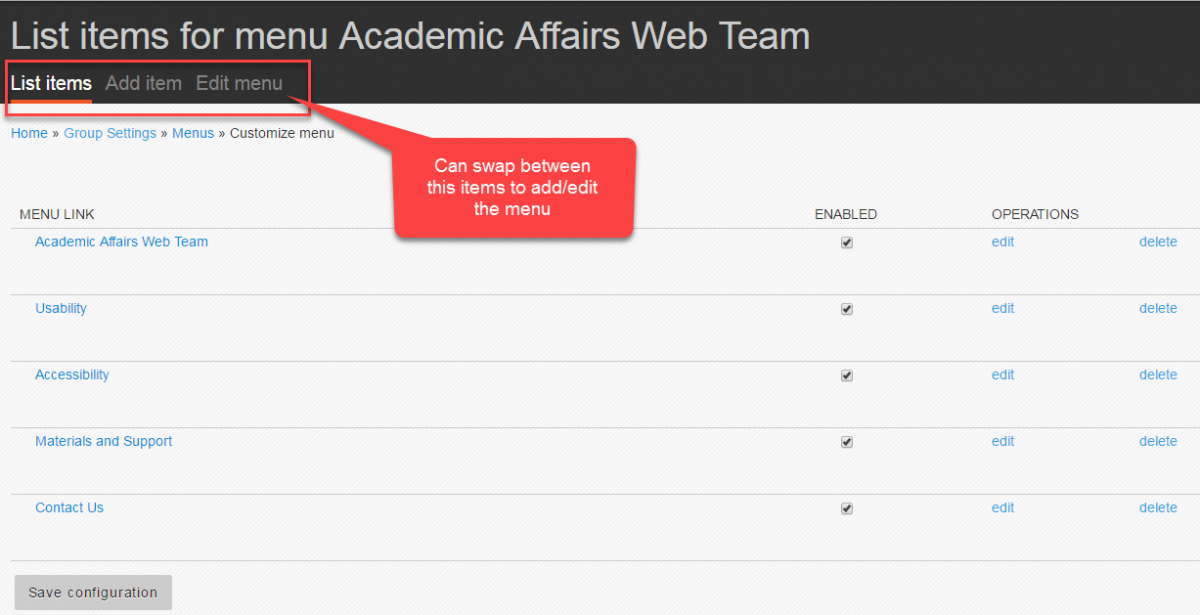
- When adding items, you’ll need to provide a title for the link.
- You’ll also need to provide its path. While this can be a traditional URL (absolute if linking to legacy content), when linking to other CSULB Drupal pages it’s best to use a node.
- There’s no direct way to know a page’s node at the moment unless you note it after the page’s creation.
- To find a node number, go to the page after creation, and hover over the “Edit Draft” tab. On the lower left of your browser window you should see the URL in this format: /node/1234/edit -- with the 1234 being the node number. In this example, you would use 'node/1234' without quotations as the link
- For parent level links that you don’t want to link to a location, use: <nolink>
- Nesting Links
- From ‘List Items’ subtab: first create the link, and then hover to the left of the link will allow you to click and drag to set its position. Slightly insetting the link, bringing it to the right a little bit, will create a nested link under the parent.
- You can accomplish nesting within the ‘Add Item’ or ‘Edit Menu’ subtabs as well – but you will select the parent link from a dropdown menu.
Image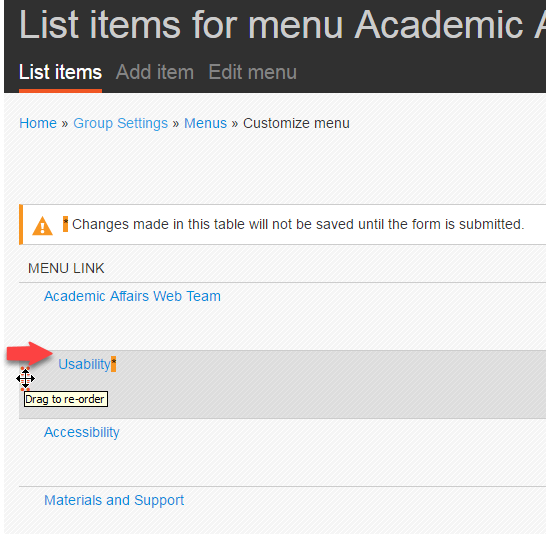
- For summary in this example below I've:
- Created a menu link titled: “Usability”.
- It’s another Drupal page so I link to its node: “node/9731”.
- I enable the link as I want this to be active immediately.
- I don’t show this link as expanded as I’m nesting any children links beneath it.
- My parent link is the root of the menu (its title).
- The weight I’ve left at a default value, but I could change this to change its position (heavier link sink to the bottom of the list, lighter to the top).
- At this time we’re not using any special ID/Classes/Styles found in the attributes list.
Image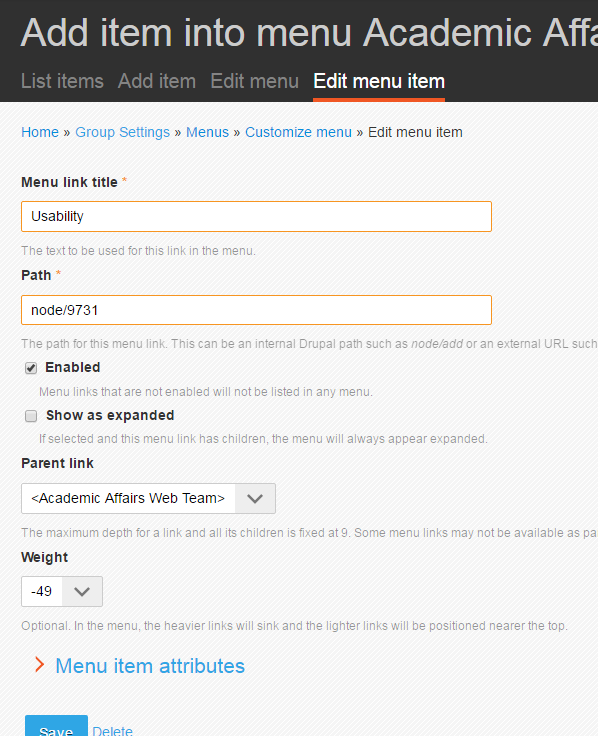
Group administrators are also able to add menu links to pages when editing the actual content. Toward the bottom of the page editing interface you’ll find the options for menu settings. It’s best to have an existing menu in place before using this feature.
For final clarification: Unit menus are horizontal navigations that all of their departments inherit. Department navigation is unique to the department, found in the left hand column of the page.
Image
